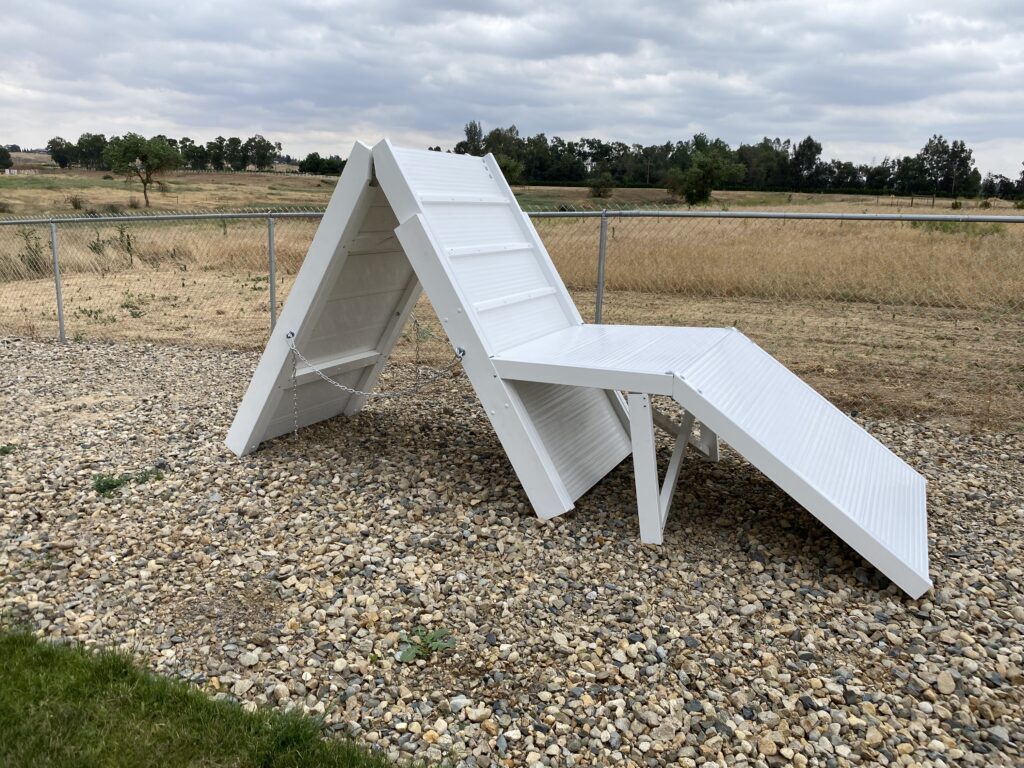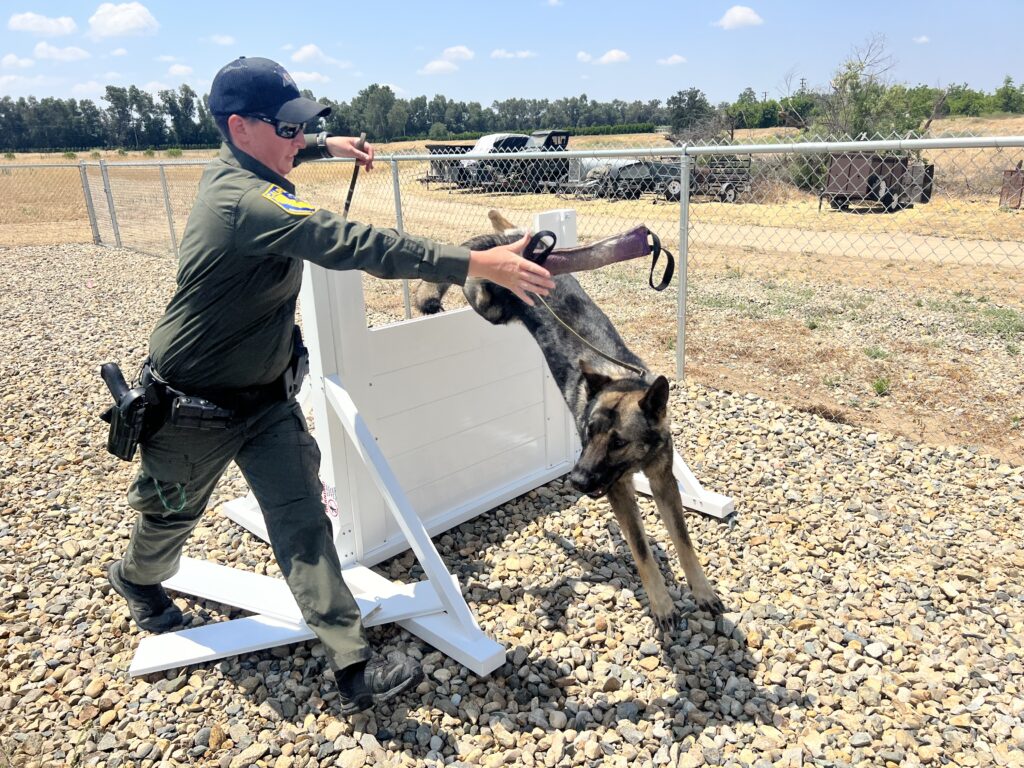Recently, the Department of Fish and Wildlife took delivery of several new K9 training obstacles at their new training facility in Central California. K9 obstacles are key for training Wildlife Officer K9s because they serve several important purposes in their training and development. Here are some reasons why K9 obstacles are crucial:







- Physical Conditioning: Wildlife Officer K9s need to be in excellent physical shape to perform their duties effectively. Obstacles provide a variety of physical challenges, such as climbing, jumping, crawling, balancing, and running, which help develop the K9’s strength, agility, endurance, and coordination.
- Confidence Building: Wildlife Officer K9s often face stressful and challenging situations in the line of duty. Obstacle training helps build their confidence by exposing them to unfamiliar environments, heights, surfaces, and objects. By successfully navigating obstacles, K9s learn to overcome fears, trust their handlers, and remain focused on their tasks.
- Obedience and Control: K9 obstacles serve as controlled environments where handlers can reinforce obedience commands and maintain control over their dogs. Obstacles provide opportunities to practice commands like “sit,” “stay,” “down,” and “heel” in different situations, reinforcing the dog’s training and ensuring they respond appropriately in high-pressure scenarios.
- Tactical Deployment: K9 obstacles simulate real-life scenarios encountered by Wildlife Officer K9s during searches, apprehensions, and tactical operations. By training on obstacles like walls, fences, tunnels, and narrow passages, K9s learn how to navigate and overcome physical barriers, which is crucial for effectively assisting their human counterparts in various law enforcement situations.
- Problem Solving: Obstacles often require K9s to use their problem-solving skills. They must figure out the best way to approach and conquer each obstacle, adapting their techniques as needed. This type of training encourages independent thinking and decision-making, which is essential for K9s to handle complex situations in the field.
- Teamwork and Bonding: Obstacle training strengthens the bond between the K9 and their handler. It fosters teamwork, trust, and effective communication between the two, as the handler guides and directs the dog through the obstacles. This strong partnership is crucial for successful Wildlife Officer K9 operations.
Overall, K9 obstacles play a vital role in training Wildlife Officer K9s by providing physical challenges, building confidence, reinforcing obedience and control, simulating real-life scenarios, developing problem-solving skills, and enhancing the bond between the K9 and their handler.





